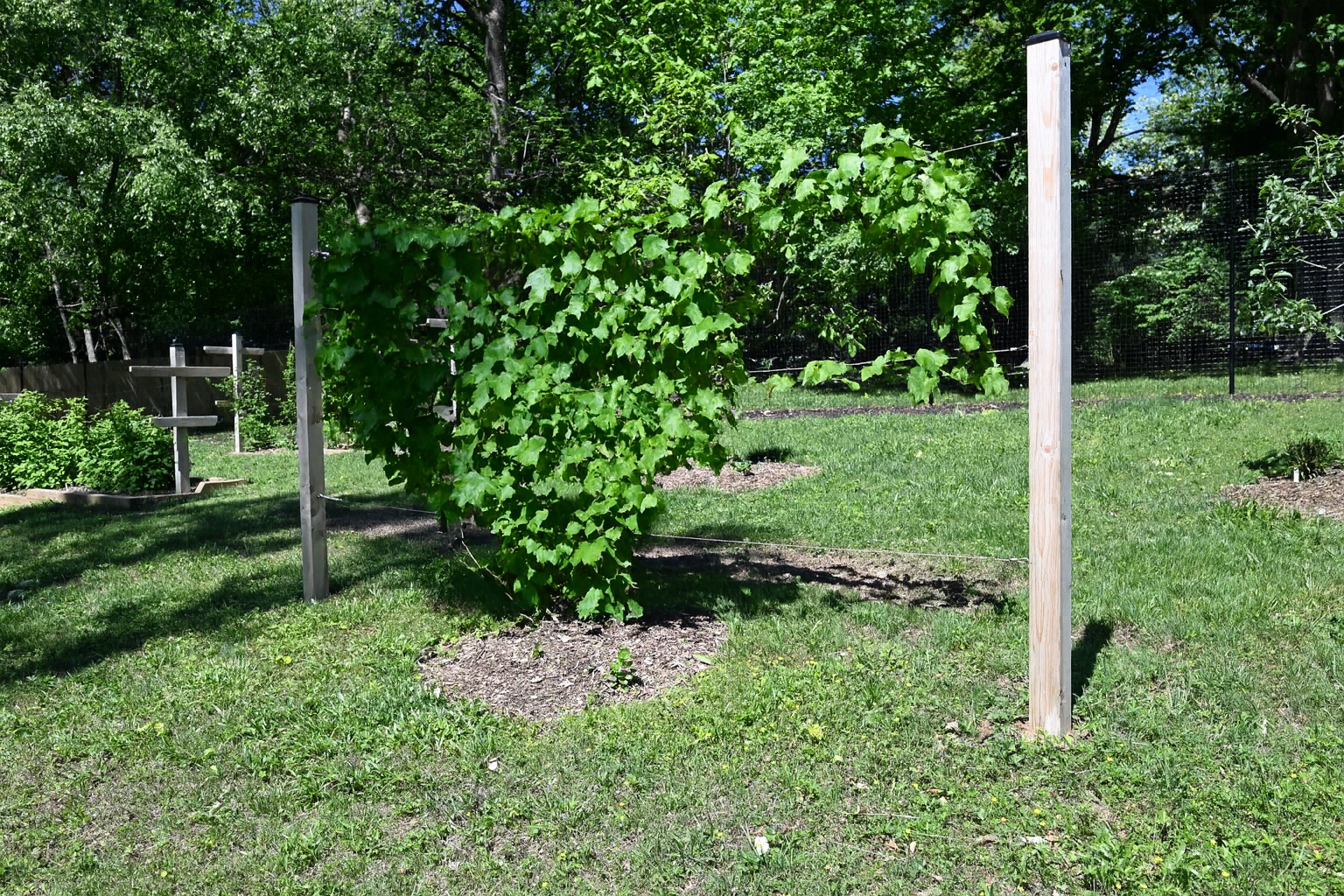Garden Design Accessories
Perennial Edibles
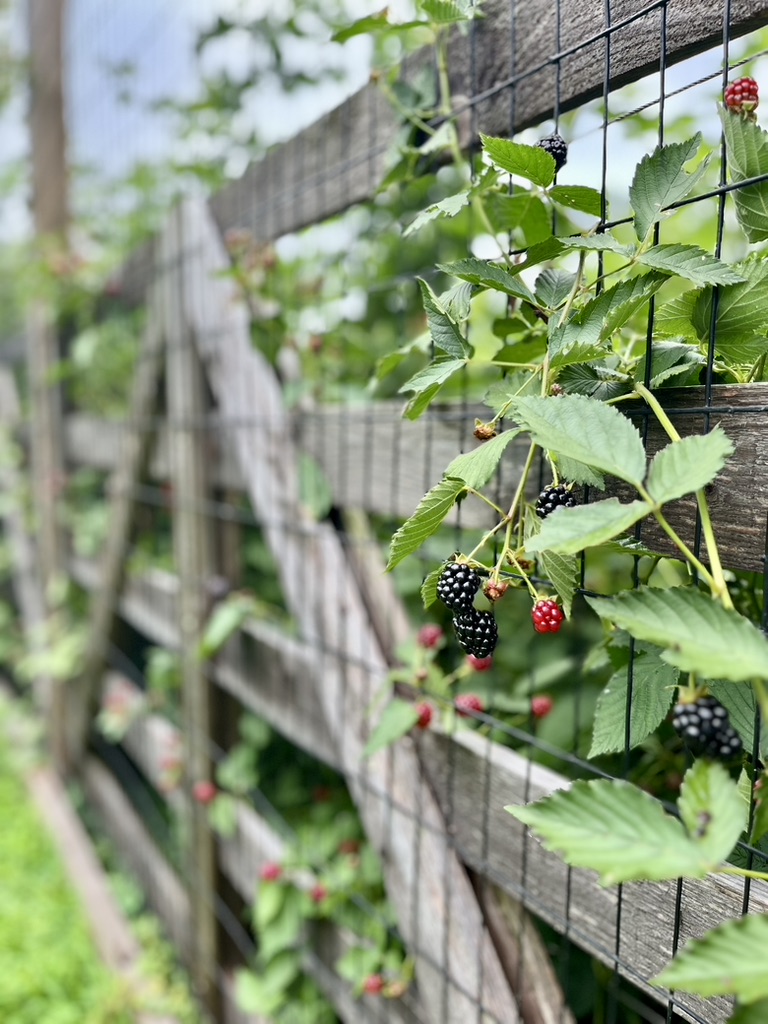
Add functional plants and year-round interest with plants that return each season. Whether it’s a raspberry trellis, fig tree, or pollinator-friendly herbs and flowers, perennial edibles create a lower maintenance and increasingly productive have your landscape & eat it too
PERENNIAL EDIBLE BENEFITS
- Low Maintenance
- Plant Once
- More Productive Year over Year
- Better for the Environment
- Berries, Herbs & Pollinators
Perennial Herb & Flower Beds
Black metal edging encapsulates a planting bed comprised of growing medium and hardwood mulch, to host a variety of herbaceous, flowering, and medicinal perennial plants. Deer resistant varieties can be planted outside of a fenced garden area, and require less maintenance than annual plants.
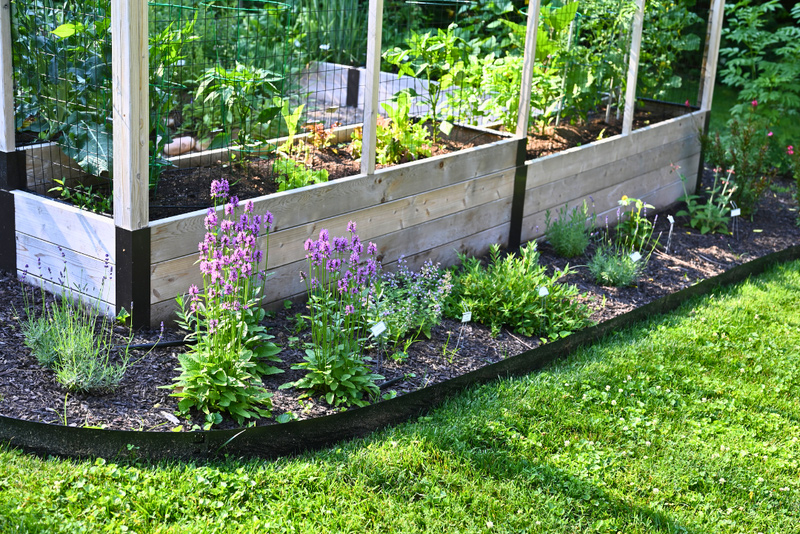
Herb Spiral
Mounded soil and river rocks placed in a spiraling pattern creates a microclimate for a variety of heat- loving herbs to grow within a stunning and unique centerpiece within a garden.
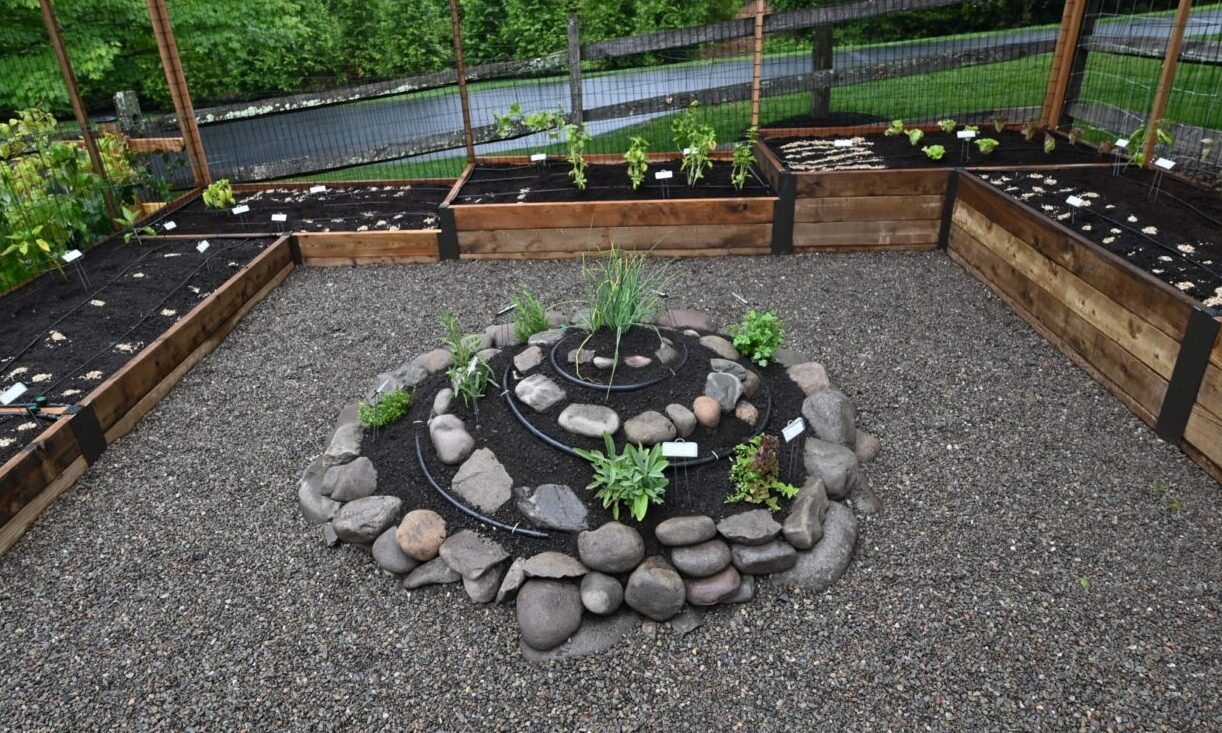
Fruiting Trees & Shrubs
If a plant can survive the coldof winter and heat of summer in a specific climate, it’s called a “perennial” in that climate.
The great part about perennials, unlike annuals, is that they are planted once, come back and typically become more productive every year! Because of this, a lot less input is needed from the gardener to replant, care for, and clean up year after year.
The challenge with many perennials is their reliability in our climate because of changing weather and pests and disease pressure. For that reason, we like to encourage planting the most reliable selections for the best experience!

Raspberry / Blackberry Trellis
Cemented cedar posts and 2”x4” crossbars hold adjustable metal wires, keeping berry canes upright for ease of maintenance and harvest.
Includes removing the sod, adding compost and mulch. Finished with black post caps and the cane fruit of your choice.
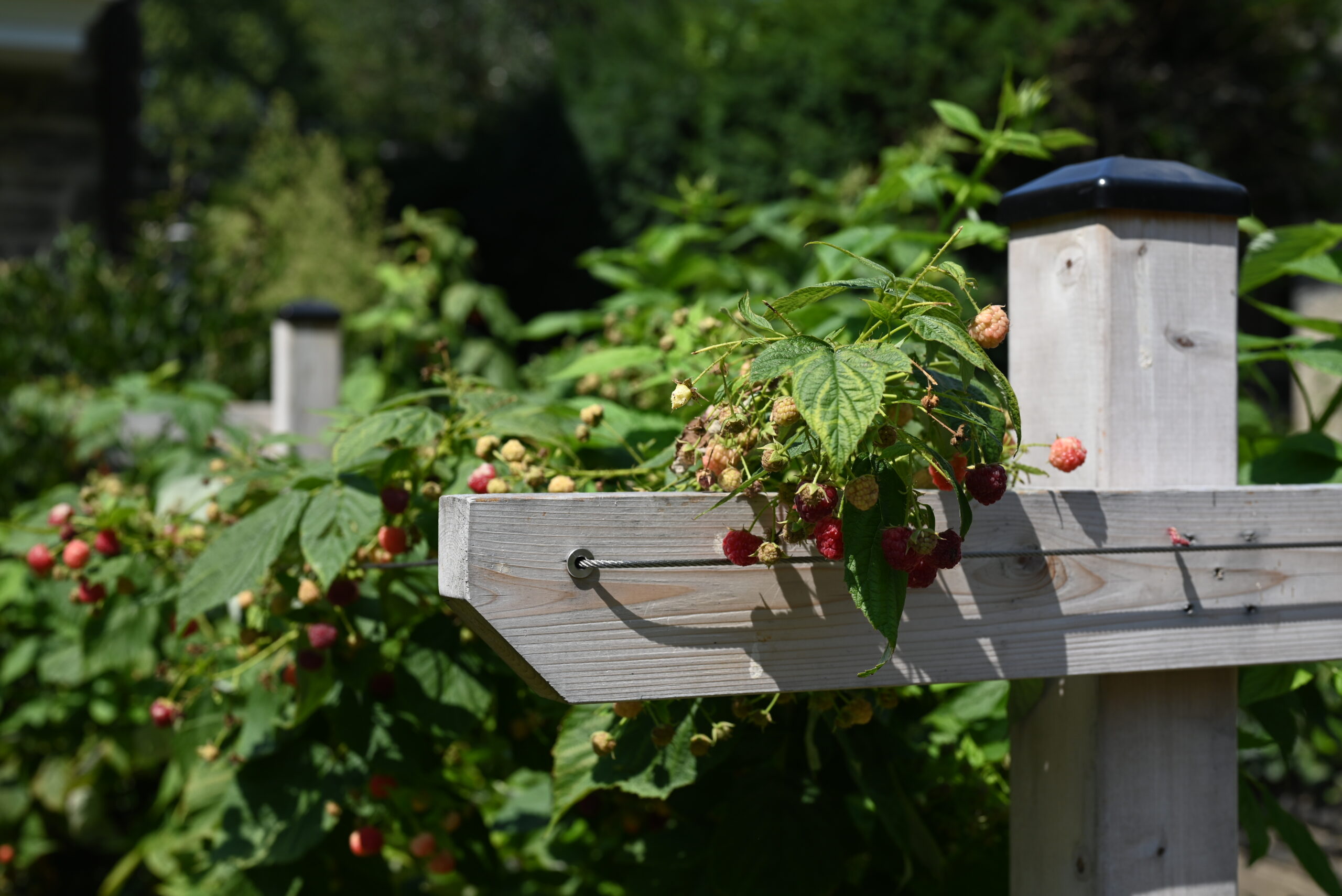
Grape Trellis
Cemented cedar posts hold heavy-duty cables, providing a sturdy scaffolding for the grapes to climb.
This method of trellising is specialized for the grapes’ natural growing habits.
